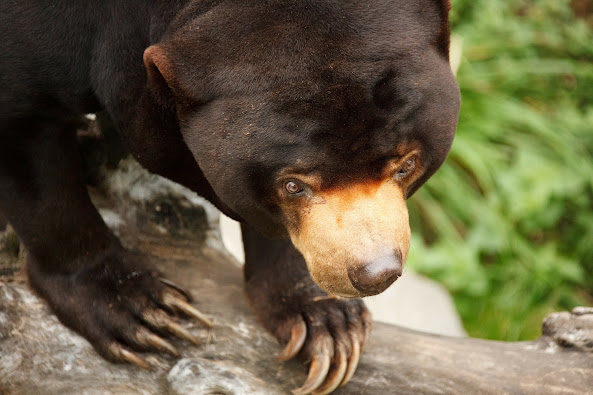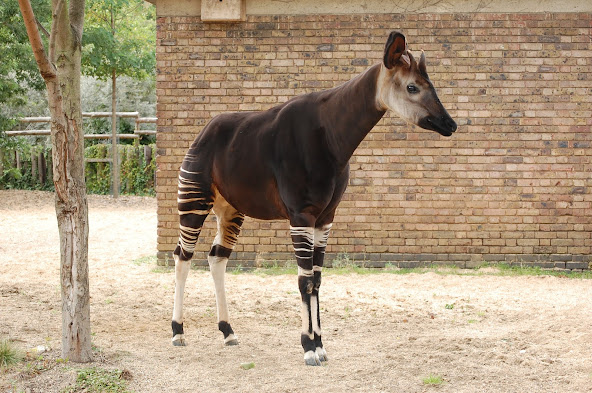Researchers have assessed that there are 8.7 million creature species on Earth. A portion of these are savage (lions, sharks, tigers). Some are delightful (hares, deer, otters).Researchers have assessed that there are 8.7 million creature species on Earth. A portion of these are savage (lions, sharks, tigers). Some are delightful (hares, deer, otters).
What's more, others are, indeed, truly odd.
Across the globe, you'll discover exceptional creatures that display wonderful and odd elements and practices. From a frog that shows off its organs to a goat that swoons when frightened, here are 50 surprising creatures to add to your movement list of must-dos now.
Shoebill
 |
| Image by Masakazu Kobayashi from Pixabay |
Stick Insect
 |
| Image by andreasmetallerreni from Pixabay |
Discovering a stick creepy-crawly requires cautious perception; as the name makes exceptionally understood, it looks like a stick. This, joined with a capacity to remain completely still for a significant length of time, gives the stick creepy-crawly "quite possibly the most proficient normal covers on Earth," as "Public Geographic" suitably puts it.
There are numerous assortments of stick bugs. One of the coolest is the goliath thorny stick bug, envisioned here. Local to Australia, it brags the additional element thistle-like spikes to additional mix into its environmental elements.
On the off chance that you experience the ill effects of a creepy-crawly fear, as many do, the Phobaeticus Kirby will frequent your bad dreams. At more than 21 crawls with its legs outstretched, this is probably the longest bug on the planet. You can discover it (or attempt to discover it – best of luck!) in Borneo.
Glass Frog
Similarly, as you can see through a glass, you can see through the uncommon glass frog.
Large numbers of these frogs have lime-green skin, however, some come up short on any tinge on their underside, making their organs apparent to the unaided eye. Similarly astounding are their spotted backs, which researchers guess are intended to look like eggs – so hunters pursuing their posterity get befuddled.
Your most obvious opportunity with regards to recognizing this tree-staying frog is in Costa Rica or Panama. Costa Rica's Tortuguero National Park specifically guarantees a decent shot at seeing one, in the entirety of its straightforward wonder.
Mantis Shrimp
 |
| Image by Kevin Mc Loughlin from Pixabay |
Mantis shrimp are old, savage, and quite strange.
Different types of mantis shrimp have been around for an expected 400 million years, and they haven't cared for some other shrimp around. They are so amazingly impressive that their members, called "clubs," can crush crab shells and bust open mollusks. (A few assortments have stuck as opposed to clubs, which are similarly imposing.)
These clubs can likewise be utilized to used to dole out around 500 punches in less than a second, conveying sufficient power to break the glass.
Furthermore, that is not all. Since these shrimp have extraordinary vision (they can find in two unique ways immediately), they hit with pinpoint exactness.
There are around 400 distinct types of mantis shrimp, the most amazing looking of which is without a doubt the multi-toned peacock mantis shrimp, imagined here.
The waters of Costa Rica and Bali are especially rich with mantis shrimp; book a jumping undertaking to see one very close.
Axolotl
 |
| Image by Tinwe from Pixabay |
The axolotl lizard figures out how to be without a moment's delay delightful and sort of upsetting.
However it creates legs, it never arrives at land, rather investing its energy walking the submerged surface. Its moniker? Strolling fish.
This phenomenal animal – which comes in colors going from smooth white to olive – is simply local to Mexico. Your most obvious opportunity with regards to seeing one exists close to Mexico City in the pools of Xochimilco.
A populace decrease is generally credited to natural surroundings misfortune, but on the other hand, is because of the way that the axolotl is viewed as a culinary delicacy.
Sun Bear
 |
| Image by PublicDomainPictures from Pixabay |
Lyrebird
Parrotfish
 |
| Image by Jeremy Wilder from Pixabay |
You can discover parrotfish in tropical reef conditions, where they utilize their outside teeth – which resemble a bill – to sever green growth rocks, coral, and other solidified substrates. This capability permits them to cut out a living in where numerous different species can't endure.
Another fun (if marginally sickening) reality? Parrotfish poop sand. Incidentally, a considerable lot of the sand grains found on white-sand seashores are parrotfish crap.
Parrotfish are found in the Indian and Pacific seas; the Seychelles islands off East Africa brag an especially sizable populace.
Aye - Aye
Head to Madagascar and, after the sun sets, center your energy around looking for the affirmative.
These nighttime lemurs have an extremely uncommon form, with huge ears and rodent-like teeth. After tapping on trees to find bugs dependent on percussion criticism, they drill an opening with their teeth and long center finger to remove and eat the creepy crawlies.
With the social markings of a woodpecker and the presence of a primate blended in with a rat, the affirmative is stand-out and, oddly, sort of charming.
Okapi
 |
| Image by Tina Robson from Pixabay |
Can't choose if you'd prefer to see a zebra or a giraffe? Why not see a creature that resembles a cross-type of both?
The okapi is the solitary living relative of the giraffe, however includes the particular high contrast markings of the zebra on its rump and front legs. Its moniker? The "zebra giraffe," clearly.
This jeopardized creature is suspicious of people and elusive (to such an extent that researchers didn't find the okapi until 1900). It lives in the Ituri Forest in the Democratic Republic of Congo, however, explorers can't get to this space. All things being equal, head to the White Oak Conservation Center in Florida, which centers around the protection of okapi, and book a visit drove by an untamed life master.




0 Comments